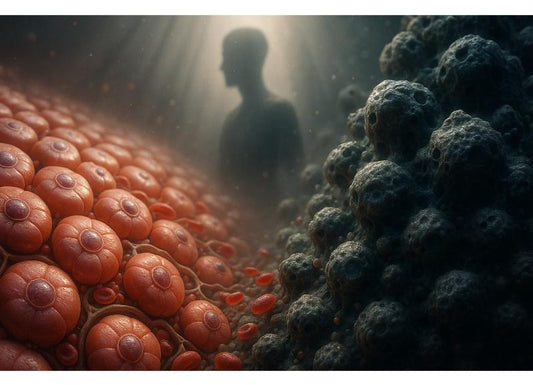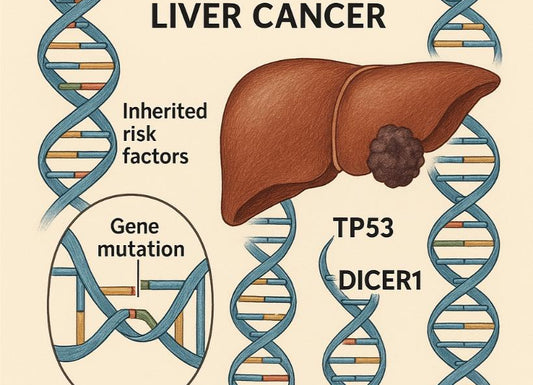Polycystic Liver Disease: Causes, Symptoms, and Relief Options
 Written By
Jaclyn P. Leyson-Azuela, RMT, MD, MPH
Written By
Jaclyn P. Leyson-Azuela, RMT, MD, MPH

As the world moves faster than ever, understanding the complexity of health conditions are crucial so you can maintain your overall well-being. Polycystic liver disease (PLD) is one of the silent disorders that can go unnoticed for years before symptoms become apparent. Although the condition is often linked to genetics, its effects can vary widely. By knowing what to look for and how to manage it, you can take control of your liver health and improve your long-term outlook.
Key Insights
-
Polycystic liver disease is primarily a genetic condition affecting liver structure
-
Imaging techniques like ultrasound and CT scans are critical for accurate diagnosis
-
Most individuals with this condition can manage symptoms through careful medical monitoring
-
Genetic testing can help identify potential risks for family members
-
At-home monitoring tools can provide valuable health information
What Is Polycystic Liver Disease and How Can It Be Diagnosed?

Polycystic liver disease involves the formation of multiple cysts inside the liver. These cysts are filled with fluid and can gradually change the liver’s size and shape. Many people live with mild forms without ever knowing they have it. However, early identification through medical imaging and genetic testing can make a significant difference in how the condition is managed.
What Does "Polycystic" Mean When Describing Liver Disease?
"Polycystic" refers to the presence of many fluid-filled sacs or cysts in the liver. These cysts are usually benign and can range from a few millimeters to several centimeters in size. Over time, they may multiply or expand, putting pressure on surrounding liver tissue.
How Is Imaging (Ultrasound, CT, MRI) Used to Diagnose Polycystic Liver Disease?
Doctors use imaging to confirm the diagnosis and assess how advanced it is.
-
Ultrasound helps detect cysts during routine checkups. This may even be requested by your doctor for some other reasons other than finding liver cysts.
-
CT scans provide clear cross-sectional images for accurate measurements
-
MRI offers high-resolution images and details that help determine cyst structure and exact location
These tests give doctors a clear picture of how your liver is functioning and whether further monitoring or treatment is necessary.
Is Genetic Testing Required for Polycystic Liver Disease Diagnosis?
Genetic testing adds another layer of accuracy. It identifies mutations that cause cyst formation, such as changes in the PRKCSH or SEC63 genes. This testing also helps predict risks for relatives and supports early detection in family members. Your doctor may suggest genetic testing if you have a family history of liver or kidney cysts.
What Are the Early Signs and Symptoms of Polycystic Liver Disease?
Polycystic liver disease often develops slowly. Many people do not notice symptoms until the cysts become large enough to affect nearby organs. Knowing the early signs can help you seek care before the condition progresses.
When Do Symptoms of Polycystic Liver Disease Typically Appear?
Symptoms most often appear in adults between 30 and 50 years old. Some may never experience discomfort, while others develop pain or fullness in the abdomen as the liver grows. Genetics largely influence when symptoms begin and how severe they become.
What Abdominal Sensations Could Indicate Polycystic Liver Disease?
You may feel a dull ache in the upper right abdomen or a sense of fullness below the ribs. The abdomen may swell slightly, or you might feel discomfort when bending forward. Sharp pain can occur if a cyst ruptures or bleeds internally.

Can Polycystic Liver Disease Be Asymptomatic?
Yes. Many people have PLD without any visible symptoms. It is often found during imaging for unrelated conditions, such as a gallbladder or kidney scan. Even if you feel fine, periodic liver checks can detect early changes that might need follow-up.
What Causes Polycystic Liver Disease?
PLD is primarily a genetic condition, meaning it often runs in families. Understanding the cause helps you plan for prevention and management.
Is Polycystic Liver Disease Inherited?
Most PLD cases follow an autosomal dominant inheritance pattern, occurring in about 85% of cases. If one parent carries the gene, there is a 50 percent chance it will pass to their child. However, not everyone with the mutation will develop symptoms. This variation depends on other genetic and environmental factors.
What Genetic Mutations Can Lead to Polycystic Liver Disease?
The condition often relates to mutations in the ADPKD1 or ADPKD2 genes, which also affect kidney development. These mutations change how cells divide and regulate fluid, leading to cyst formation. People with these gene variations may also have cysts in other organs, including the kidneys or pancreas.
Are Lifestyle Factors Contributing to Polycystic Liver Disease?
While genetics are the main cause, lifestyle can influence how quickly the condition progresses. You can help protect your liver function by:
-
Maintaining a healthy weight
-
Exercising regularly
-
Limit alcohol intake or best avoid it
A diet rich in fruits, vegetables, and lean proteins supports overall liver health and may reduce inflammation.
How Is Polycystic Liver Disease Treated and Can It Be Prevented?
Treatment depends on the number and size of cysts, as well as how they affect your daily life. Many people manage the condition without surgery, but others may need medical procedures when cysts cause pain or compression.
Can Medications Reduce the Number or Size of Liver Cysts?
There is no single drug that eliminates cysts, but certain treatments can ease symptoms. Pain medications may be prescribed for discomfort. Hormone therapies are being studied for their potential to slow cyst growth. Some patients respond to drugs that regulate fluid secretion in the liver, though ongoing research continues to find more effective options. If the cyst appears infected, antibiotics can also be given.
What Procedures Are Available for Treating Large Liver Cysts?
If cysts cause pain or organ pressure, procedures can relieve discomfort.
-
Percutaneous drainage removes cyst fluid using a needle and catheter
-
Laparoscopic fenestration opens cyst walls to prevent refilling
-
Partial liver resection removes affected areas when cysts are widespread
Each approach depends on your overall health, cyst size, and how much the condition interferes with daily activity.
When Is Liver Transplantation Needed for Polycystic Liver Disease?
A liver transplant is rare but may be considered when cysts cause severe pain, poor digestion, or liver failure. Doctors perform detailed assessments to determine if transplantation is the safest option. According to clinical data, about 1.6% of PLD patients require a transplant, which is extremely very low.
When Should You Seek Medical Advice for Liver Cysts?
Recognizing when to call your doctor can prevent long-term complications. Even small symptoms can point to liver changes that need medical review.
What Pain, Swelling, or Other Symptoms Should Prompt Medical Evaluation?

Contact a healthcare professional if you experience:
-
Ongoing abdominal pain that lasts several days
-
Noticeable swelling or bloating of the abdomen
-
Unexplained weight loss
-
Yellowing of the eyes or skin (also known as jaundice)
These could signal changes in liver size or function that need further testing and evaluation.
What Lab Tests Will Your Doctor Use to Assess Liver Cysts?
Your doctor may order a series of tests to understand how your liver is performing. It may include a combination of the following:
-
Comprehensive metabolic panel, which checks the liver enzyme levels and proteins
-
Liver function tests that will assess how well your liver is processing waste
-
Genetic screening can identify risk factors or gene mutations that have been inherited
-
Image-guided tests can confirm the presence or absence of cysts and their exact location
Together, these results guide your treatment plan and monitoring schedule.
How Can At-Home Monitoring Tools Assist With Liver Cyst Management?
At-home monitoring helps you track changes between doctor visits. Keep a record of blood pressure, as high readings may point to related kidney strain. Some patients use urine test strips to watch for protein levels, which can reflect how the liver and kidneys are coping. Documenting any new pain or swelling also helps your doctor adjust your care plan.
How Can At-Home Test Strips Help People With Polycystic Liver Disease or Related Kidney Issues?
Since PLD often occurs alongside polycystic kidney disease, home testing can be useful for spotting early signs of liver stress. It gives you a practical way to stay alert to changes that might need medical review.
Can Urine Test Strips Detect Kidney Dysfunction Associated With Polycystic Liver Disease?
Urine test strips can identify protein or creatinine levels that suggest liver strain. They act as an early warning tool for people with known genetic risk. While they cannot replace professional diagnostics, they can help you catch changes before they progress.

How Accurate Are At-Home Urine Test Strips For Monitoring Liver Health?
According to a study, point-of-care or at-home urine test strips using smartphones had an accuracy rate of about 92%. They should be used as screening tools, not as final diagnostic tests. Always confirm any abnormal results with a healthcare provider.
When Should You Use At-Home Test Strips to Monitor Your Health?
Use them under a doctor’s guidance, especially if you already have diagnosed PLD or kidney cysts. Testing once every few weeks or during periods of discomfort can give valuable information for your next medical visit. Consistent monitoring supports better long-term management.
Related Resources
Can Liver Disease Cause Headaches? Knowing The Connection and Safe Liver Disease Headache Treatment
Life Expectancy with Fatty Liver Disease: What You Need to Know
Quick Summary Box
-
Polycystic liver disease is primarily genetic
-
Imaging and genetic testing confirm diagnosis
-
Symptoms may range from silent to severe
-
Lifestyle choices can influence disease progression
-
At-home monitoring supports medical management
References
Alshaikhli, A., & Al-Hillan, A. (2022). Liver Cystic Disease. PubMed; StatPearls Publishing. https://www.ncbi.nlm.nih.gov/books/NBK567739/
Bernts, L. H. P., Brüggemann, R. J. M., Jansen, A. M. E., Jager, N. G. L., Wertheim, H. F. L., Drenth, J. P. H., & Lantinga, M. A. (2024). Liver cyst penetration of antibiotics at the target site of infection: a randomized pharmacokinetic trial. Journal of Antimicrobial Chemotherapy. https://doi.org/10.1093/jac/dkae394
Cornec-Le Gall, E., Torres, V. E., & Harris, P. C. (2018). Genetic Complexity of Autosomal Dominant Polycystic Kidney and Liver Diseases. Journal of the American Society of Nephrology : JASN, 29(1), 13–23. https://doi.org/10.1681/ASN.2017050483
Duijzer, R., Barten, T. R. M., Staring, C. B., Drenth, J. P. H., & Gevers, T. J. G. (2022). Treatment of Polycystic Liver Disease. Journal of Clinical Gastroenterology, 56(9), 731–739. https://doi.org/10.1097/mcg.0000000000001749
Frazier, R. L., & Huppmann, A. R. (2020). Educational Case: Autosomal Dominant Polycystic Kidney Disease. Academic Pathology, 7, 237428952093925. https://doi.org/10.1177/2374289520939257
Inagaki, K., Tsuriya, D., Hashimoto, T., & Nakamura, K. (2025). Verification of the Reliability of an Automated Urine Test Strip Colorimetric Program Using Colorimetric Analysis: Survey Study. JMIR Formative Research, 9, e62772–e62772. https://doi.org/10.2196/62772
Kothadia, J. P., Kreitman, K., & Shah, J. M. (2020). Polycystic Liver Disease. PubMed; StatPearls Publishing. https://www.ncbi.nlm.nih.gov/books/NBK549882/
Mahboobipour, A. A., Ala, M., Lord, J. S., & Yaghoobi, A. (2024). Clinical manifestation, epidemiology, genetic basis, potential molecular targets, and current treatment of polycystic liver disease. Orphanet Journal of Rare Diseases, 19. https://doi.org/10.1186/s13023-024-03187-w
Waanders, E., te Morsche, R. H. M., de Man, R. A., Jansen, J. B. M. J., & Drenth, J. P. H. (2006). Extensive mutational analysis of PRKCSH and SEC63 broadens the spectrum of polycystic liver disease. Human Mutation, 27(8), 830. https://doi.org/10.1002/humu.9441

Jaclyn P. Leyson-Azuela, RMT, MD, MPH, is a licensed General Practitioner and Public Health Expert. She currently serves as a physician in private practice, combining clinical care with her passion for preventive health and community wellness.



